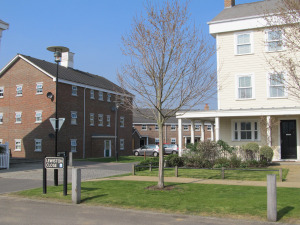
The Berkeley Group recently published Part 1 of a Social Sustainability framework. It provides a list of social sustainability indicators and compares four Berkeley developments with other ‘comparable areas’. This is a great initiative and the efforts should be praised; but the framework does not yet provide enough depth and rigour for others to make use of it. The research finding that first roused my suspicions was in regards to high-density developments.
The report found that residents in two inner city high-density developments reported feeling safer than residents from comparable developments (in England and Wales). And on that basis, Planning Magazine reported that “high-density developments can generate higher feelings of safety … than lower density housing schemes” (link).
Putting the press commentary aside, I’m still concerned about the conclusions drawn from the research and I’m questioning the research methodology. Looking at the density finding, is it right to conclude that the research “challenges popular stereotypes about the perceived safety of low-density suburban communities compared to high-density urban communities” on the basis of a survey of residents in four developments?
We have to question if this is definitely a measure of how well the developments perform after people move in. Are there alternative explanations that might explain the findings? Or could the finding be explained the number of local police/community support officers in the area? I was unable to locate Part 2 of this document online which is supposed to provide more detail on the research methodology. I would also question the sample size and whether a representative sample was taken. This isn’t clear from what is readily available online.
I don’t want to be too critical of this publication and its role in raising the importance of designing for social sustainability. But it is essential that we understand the potential problems with this report and its applicability to measuring other developments.
More fundamentally, we need to ask how and why these developments achieved these levels of social sustainability. What is good practice in terms of designing for socially sustainable places? What did the developers actually do to result in these findings? As Freakonomics reminds us, it is easy to “embrace faulty causes, usually at the urging of an expert proclaiming a truth in which he has a vested interest” (Levitt and Dubner, p.128). I know many developers that would be thrilled to see positive evidence for high-densities, especially when they are trying to make a living in a double dip recession. We need more information about this research and more research on some of the findings before we can apply this method or draw any conclusions for new developments.
References
Most references are provided by links above.
Steven Levitt and Stephen J. Dubner (2005). Freakonomics: A Rogue Economist Explores the Hidden Side of Everything. William Morrow/HarperCollins.

